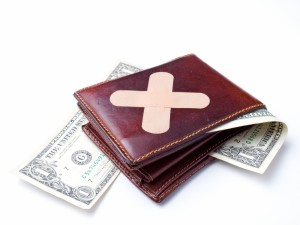After a serious accident or losing someone that you rely upon economically, the financial hardships can be overwhelming. In even the best-case scenarios, justice is never immediate. I’ve seen people suffer incredible economic losses  while they wait for justice, including losing their homes.
while they wait for justice, including losing their homes.
Some people file for bankruptcy. What most victims and even personal injury lawyers in Maryland do not fully understand sometimes, your personal injury claim becomes the property of the bankruptcy estate, when an injury victim files for bankruptcy protection whether the claim is listed in the bankruptcy or not. In my experience, the personal injury victim generally gets the claim back after the bankruptcy. But as the victim’s lawyer you represent the victim, then the trustee, and then back to the victim again. The complete thing is just an utter mess.
Scholtzhauer v. Morton
The Maryland Court of Special Appeals addressed an even bigger than usual mess recently in a bankruptcy personal injury case in Scholtzhauer v. Morton. The victim was in a car accident in Centreville, a nice little town just over the bridge (one of my sons had a baseball tournament there this summer). She filed for bankruptcy. Then she filed a lawsuit. The Defendant (actually Defendants Ferguson, Schetelich & Ballew, P.A.) sought summary judgment because the claim was ostensibly discharged in the bankruptcy.
The Defendant’s argument is reasonable. A Chapter 7 voluntary bankruptcy petition requires the debtor to list their assets. The Plaintiff did not list the personal injury claim. If a personal injury lawsuit is not scheduled in the bankruptcy petition, the potential claim or cause of action remains a part of the debtor’s bankruptcy estate. This remains true after the bankruptcy matter is closed, which is exactly what happened here. So their argument, which is crazy but legally correct, is that the victim does not have the standing to bring her own claim, because she no longer owns the claim.
So Defendant files the motion for summary judgment. The Plaintiffs’ attorney says “Whoops!” and files a response to the motion and asks the bankruptcy court to fix the mistake. They asked the court to stay its ruling until the bankruptcy court ruled, which was denied. The court granted summary judgment for the Defendant. On the same day, the bankruptcy court gave a ruling that the Plaintiff re-assumed control of the claim. So the Plaintiff’s accident lawyer filed a motion to amend based on the new ruling. The Circuit Court for Queen Anne’s County denied the motion, and the Plaintiff appealed.
Such a mess. The Court of Special Appeals agreed that when the court initially granted summary judgment because the Plaintiff did not own her own claim. The Court of Special Appeals did not know that the bankruptcy court had ruled on the grounds that she reacquired the claim six weeks before. The court found that once this was brought to the court’s attention, through a motion to alter or amend, the court had an obligation to consider the ruling.
The court also rejected the Defendant’s argument that while the bankruptcy court can allow the Plaintiff to correct her error, in failing to accurately complete her bankruptcy schedules, it cannot undo her lack of standing to bring the claim in the first place. The court ruled that she had standing when she filed suit — for reasons not worth flushing out there — but even if she did not, what matters is whether the Plaintiff had the claim at the time it was dismissed. Not whether she – at one time – did not possess the right she now claims.
You can find the opinion in Scholtzhauer v. Morton here.
 Maryland Injury Law Center
Maryland Injury Law Center

